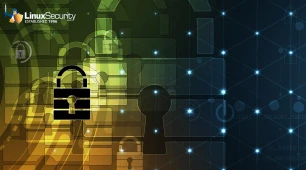
The recent discovery of a backdoor in Linux's xz compression tool has shed light on cybercriminals' ingenious methods of gaining entry and remaining undetected within critical infrastructure foundations. The xz backdoor presents an acute threat to security and system integrity, and its creators leveraged sophisticated methods to remain undetected.
Over two months after this alarming discovery, we'll provide a comprehensive analysis of this threat, detailing tactics employed by those behind its creation to remain undetected. We'll also offer practical advice for protecting your Linux systems against similar future threats.
Understanding the xz Backdoor and Its Impact
The xz backdoor is a malicious piece of code within the xz compression tool—a widely used utility on Linux platforms—intended to gain unauthorized entry to an entire system through SSH login processes. The backdoor uses an embedded public key in its binary code to decrypt and verify payload data, bypassing authentication mechanisms and giving attackers control of an infected server.
This backdoor targeted Linux system administrators and users of distributions that contained compromised versions of the xz tool, specifically versions 5.6.0 and 5.6.1. While such versions typically were found only in development, test, or experimental releases, their potential for widespread systemic damage if exploited more widely was alarmingly high.
The Art of Concealment: Strategies Used by the Perpetrators
 One of the more sophisticated methods employed by threat actors was custom steganography to conceal public keys within binary code. Steganography (hiding files, messages, images, or videos within other files or messages) enabled threat actors to embed malicious components within seemingly innocent code, making it highly challenging for researchers to understand how the backdoor operated initially.
One of the more sophisticated methods employed by threat actors was custom steganography to conceal public keys within binary code. Steganography (hiding files, messages, images, or videos within other files or messages) enabled threat actors to embed malicious components within seemingly innocent code, making it highly challenging for researchers to understand how the backdoor operated initially.
Furthermore, this backdoor featured an anti-replay mechanism to prevent intercepted communications from being reused elsewhere and erase all traces of itself from the SSH server's log function. This made forensic analysis more challenging while significantly delaying detection.
Social engineering was key in executing this sophisticated threat. The original creator of the xz compression tool, Jia Tan, was coaxed into giving over control under pretenses of health issues after receiving endorsements from what are now suspected co-conspirators. Jia Tan then gradually hijacked the project to introduce malicious code subtly over time, further complicating detection efforts.
How Can I Secure My Linux Systems Against the xz Backdoor and Similar Threats?
 Given the sophisticated methods employed by perpetrators of the xz backdoor, traditional defensive measures alone are inadequate in protecting against sophisticated threats like these. However, specific steps can be taken to bolster your Linux system's defenses against advanced threats like this backdoor:
Given the sophisticated methods employed by perpetrators of the xz backdoor, traditional defensive measures alone are inadequate in protecting against sophisticated threats like these. However, specific steps can be taken to bolster your Linux system's defenses against advanced threats like this backdoor:
- Rigorous Code Review and Audit: Open-source contributions should undergo stringent code reviews and audits by multiple trusted reviewers to detect potentially malicious code insertions before being accepted into the project. This helps detect potentially unsafe additions before they're added to the project.
- Utilize Trusted Sources: Downloading software or updates from official repositories or trusted sources helps prevent backdoors from being introduced via compromised software.
- Introduce Intrusion Detection Systems (IDS): IDS are helpful tools for monitoring system and network activities for malicious or policy violations. Setting IDS to monitor SSH login processes or any modifications made without authorization may help detect similar backdoors on systems early.
- Educate and Train Team Members: It is of utmost importance to raise awareness and train team members about social engineering tactics, as this can foster a culture of skepticism and verification within project management and development teams.
- Maintain Software Updates from Trusted Sources: Applying updates regularly ensures that vulnerabilities or backdoors discovered in software are promptly patched, thus decreasing the exploitation window.
- Implement Advanced Security Measures: Implementing advanced security measures through behavioral analysis and Machine Learning techniques can assist in detecting anomalous system operations and potentially identify intrusion attempts that use sophisticated concealment methods.
Our Final Thoughts: What Can We Learn from the xz Backdoor Incident?
The xz backdoor incident underlines the critical need for increased vigilance, thoroughness, and innovation in cybersecurity practices. By employing a multilayered defense approach combining technological approaches with human insight to strengthen defenses against increasingly sophisticated and stealthy threats to Linux environments, Linux admins and users can improve their protection against advanced attacks that threaten digital domains.

















